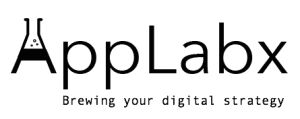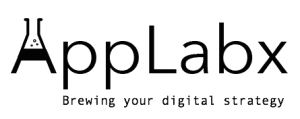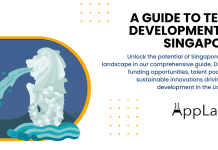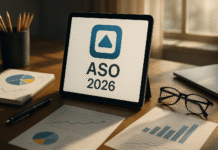Key Takeaways
- AI-powered SEO and semantic search are transforming how businesses in Estonia optimize for visibility and user intent in 2025.
- Mobile-first design, fast-loading websites, and bilingual content in Estonian and English are now essential ranking factors.
- Local SEO, e-commerce optimization, and investing in expert-led strategies drive sustainable growth in Estonia’s competitive digital market.
Estonia, often celebrated as one of the most digitally advanced nations in Europe, continues to set benchmarks in technology, digital governance, and e-commerce. By 2025, the country has emerged as a vibrant hub for online business, supported by its globally renowned e-government initiatives, rapid internet speeds, and a digitally literate population. Against this backdrop, Search Engine Optimization (SEO) has become a cornerstone of business growth, shaping the way companies in Estonia capture online visibility, attract targeted traffic, and remain competitive in both domestic and international markets.

The evolution of SEO in Estonia reflects a blend of local market dynamics, linguistic diversity, mobile-first user behaviour, and AI-driven innovations. With Google holding a dominant share of the Estonian search engine market, businesses are compelled to align their strategies with its algorithms while also adapting to localized needs such as bilingual content in Estonian and English. Furthermore, the rise of e-commerce—forecasted to exceed billions of euros in turnover—has created an unprecedented demand for optimized online storefronts, making SEO not just a marketing tool but an economic necessity.
The Digital Landscape in 2025
- Estonia boasts some of the fastest mobile internet speeds in the world, which amplifies the importance of technical SEO and mobile responsiveness.
- The country’s e-commerce market continues to expand rapidly, driven by platforms like Kaup24.ee and Hansapost.ee, where SEO plays a pivotal role in customer acquisition.
- With Estonia’s government pushing forward with its AI Leap 2025 program, artificial intelligence has become deeply intertwined with SEO practices, from predictive search trends to automated content creation.
Shifting Consumer and Search Behaviours
- Estonian consumers are increasingly bilingual, necessitating businesses to create optimized content in both Estonian and English to capture local and international audiences.
- Zero-click searches and AI-powered overviews are reshaping how users interact with search results, pushing companies to focus on structured data, featured snippets, and conversational queries.
- The rise of voice search and AI-driven assistants has introduced new SEO challenges and opportunities, particularly for businesses aiming to capture micro-moments and long-tail queries.
Why SEO Matters More Than Ever in Estonia
The Estonian digital economy is no longer about being online—it is about being discoverable, accessible, and relevant. Companies that fail to invest in SEO risk losing visibility in a marketplace where consumer journeys almost always begin with a search query. Whether it is a local café in Tallinn targeting foot traffic through Google Business Profile optimization or a SaaS company expanding globally from Estonia’s tech ecosystem, SEO serves as the linchpin connecting digital presence to measurable growth.
Looking Ahead
The state of SEO in Estonia in 2025 is characterized by innovation, adaptability, and competitiveness. Businesses must integrate AI-powered tools, embrace multilingual strategies, prioritize mobile-first performance, and focus on user-centric experiences to thrive in this evolving landscape. As Estonia continues to strengthen its position as a European digital leader, the role of SEO will only expand, bridging technology, culture, and commerce in unprecedented ways.
But, before we venture further, we like to share who we are and what we do.
About AppLabx
From developing a solid marketing plan to creating compelling content, optimizing for search engines, leveraging social media, and utilizing paid advertising, AppLabx offers a comprehensive suite of digital marketing services designed to drive growth and profitability for your business.
At AppLabx, we understand that no two businesses are alike. That’s why we take a personalized approach to every project, working closely with our clients to understand their unique needs and goals, and developing customized strategies to help them achieve success.
If you need a digital consultation, then send in an inquiry here.
Or, send an email to [email protected] to get started.
The State of SEO in Estonia in 2025
- Estonia’s Digital Foundation: A 2025 Snapshot
- The Estonian SEO Market: Services, Costs, and Key Players
- Strategic SEO for the Estonian Context
- The Impact of AI and Future Trends
- Key Challenges and Strategic Recommendations
- Actionable Recommendations for Businesses
1. Estonia’s Digital Foundation: A 2025 Snapshot
A. Digital Connectivity and User Demographics: A Market in Transition
Demographic Shifts and Market Dynamics
- Population Landscape
- As of January 2025, Estonia’s total population was recorded at 1.35 million, marking a decline of approximately 13,000 residents (-1.0%) compared to 2024.
- This demographic contraction presents challenges for digital growth, reinforcing the need for SEO strategies that focus on retention and deeper engagement, rather than simple audience expansion.
- Internet Penetration and User Base
- Estonia’s internet penetration remains among the highest globally at 93.2%, with 1.26 million active internet users.
- However, the user base shrank by 12,000 individuals (-1.0%) year-over-year, signaling a transition from growth to maturity within the digital market.
- SEO strategies must adapt to this maturity by targeting existing digital citizens with precision marketing and content personalization.
Connectivity Infrastructure: A Backbone for SEO
- High-Speed Internet Growth
- Median mobile internet download speeds surged to 107.74 Mbps, reflecting a 34.9% year-over-year increase.
- Fixed internet speeds also advanced to 89.16 Mbps, up 13.2% from 2024.
- These metrics indicate that Estonia’s digital environment is capable of supporting high-quality multimedia content, making SEO strategies involving video, interactive tools, and image-rich pages increasingly viable.
- Mobile-First Imperative
- While Estonia lags behind the EU average in terms of very high-capacity networks (VHCN) and 5G coverage, the acceleration of 4G and early 5G networks ensures superior performance for mobile platforms.
- SEO professionals must adopt a mobile-first approach, ensuring:
- Fast-loading web pages.
- Responsive web design.
- Optimized mobile content experiences.
Social Media and Mobile Usage: Evolving Behaviors
- Social Media Contraction
- By January 2025, Estonia counted 989,000 social media user identities, representing 73.1% of the population.
- This figure declined by 51,000 (-4.9%) compared to 2024, suggesting a slight shift in user engagement patterns, potentially towards more niche platforms or private digital spaces.
- Mobile Connectivity
- Active mobile connections reached 1.91 million, equivalent to 141% of the total population—a clear indicator of a multi-device ecosystem.
- 97.1% of these connections are broadband-enabled (3G, 4G, or 5G), underscoring the dominance of mobile browsing and app-based interactions.
- SEO strategies must therefore prioritize:
- Localized content optimized for mobile searches.
- Accelerated Mobile Pages (AMP) or equivalent solutions.
- Seamless integration with social and mobile commerce platforms.
Comparative Digital Metrics: 2024 vs 2025
| Metric | 2024 | 2025 | Year-over-Year Change |
|---|---|---|---|
| Population | 1.32 million | 1.35 million | +2.3% |
| Internet Users | 1.24 million | 1.26 million | +1.6% |
| Internet Penetration | 93.7% | 93.2% | -0.5 percentage pts |
| Social Media Users | 1.04 million | 989 thousand | -4.9% |
| Mobile Connections | 1.92 million | 1.91 million | -0.5% |
| Median Mobile Speed | 79.88 Mbps | 107.74 Mbps | +34.9% |
| Median Fixed Speed | 78.73 Mbps | 89.16 Mbps | +13.2% |
Strategic Implications for SEO in Estonia
- With declining population and internet user numbers, the Estonian SEO market in 2025 is no longer driven by scale but by quality of engagement.
- Content strategies must focus on:
- Personalization to retain a stable audience.
- Local SEO to capture intent-driven searches in a competitive, saturated environment.
- Leveraging fast, mobile-friendly experiences to meet consumer expectations.
- The rise of high-speed connectivity paves the way for incorporating advanced content formats, from AI-driven personalization to immersive multimedia experiences, ensuring businesses remain competitive in Estonia’s digitally advanced but maturing landscape.
B. The E-commerce Landscape in 2025: A Digital Powerhouse
E-commerce as a Pillar of the Estonian Economy
- Revenue Growth and Market Scale
- Estonia’s e-commerce market has solidified its role as one of the country’s most dynamic economic drivers in 2025.
- In 2024, the sector generated €5.4 billion in revenue, accounting for approximately 25% of the nation’s total trade turnover.
- This reflects an 18% year-on-year growth, demonstrating the strength of Estonia’s digital-first economy.
- While some external sources reported a lower estimate of US$403 million, the €5.4 billion figure is more credible due to its direct alignment with official trade turnover data and the parallel rise in parcel delivery volumes.
- Strategic Implication for SEO
- Such rapid expansion underscores the strategic significance of e-commerce SEO for both local and international brands operating in Estonia.
- Businesses that fail to optimize their digital presence risk being overshadowed in an increasingly competitive online marketplace.
Consumer Behavior and Market Vitality
- Domestic Parcel Growth
- In 2024, Estonian consumers ordered 17 million parcels via parcel machines, representing a 14% increase year-over-year.
- Parcel machines have become a central component of the digital retail infrastructure, reflecting the nation’s reliance on efficient last-mile logistics.
- Local vs. Cross-Border Dynamics
- A critical insight is that 72% of parcels were sourced from domestic retailers, contradicting the assumption that Estonia’s e-commerce is dominated by cross-border shopping.
- This highlights the strength of the domestic retail ecosystem, where consumers exhibit a clear preference for local marketplaces.
- SEO Implications
- Brands must prioritize local search engine optimization, ensuring visibility on Estonia’s most popular online retail platforms such as Kaup24.ee and Hansapost.ee.
- Content strategies should integrate:
- Localized keywords in Estonian language.
- Product listings optimized for local search intent.
- Trust signals, such as secure payments, domestic delivery reliability, and customer reviews.
Comparative E-commerce Metrics
| Metric | 2023 | 2024 | Year-over-Year Change |
|---|---|---|---|
| E-commerce Revenue | €4.57 billion | €5.4 billion | +18% |
| Share of Trade Turnover | 21% | 25% | +4 percentage points |
| Parcels Delivered | 14.9 million | 17 million | +14% |
| Domestic Parcel Share | 70% | 72% | +2 percentage points |
The Future of SEO in Estonia’s E-commerce Sector
- Local SEO Dominance
- With the majority of online purchases tied to domestic retailers, local SEO optimization is paramount for capturing consumer attention.
- Mobile and User-Centric Optimization
- Given Estonia’s advanced digital infrastructure and growing reliance on mobile commerce, businesses must optimize for fast-loading, mobile-friendly platforms.
- Competition for Visibility
- As the market matures, brands must focus on:
- Technical SEO to ensure flawless site performance.
- Content-driven SEO with product guides, blogs, and FAQs.
- Conversion-focused optimization, aligning product pages with buyer intent.
- As the market matures, brands must focus on:
- Sustainability and Consumer Trust
- Increasing consumer emphasis on local products, sustainability, and trust signals suggests that SEO strategies should also highlight eco-friendly initiatives and ethical sourcing practices to gain a competitive edge.
C. The Search Engine Environment: The Google Monolith
Market Structure and Competitive Landscape
- Google as the Primary Gateway
- As of July 2025, Google maintains a near-total dominance of Estonia’s search engine ecosystem, commanding 90.63% of the market share.
- This overwhelming preference reflects not only global trends but also Estonia’s deeply digitalized society, where users demonstrate a clear reliance on Google for information retrieval, product discovery, and transactional queries.
- Marginal Competitors
- Bing holds a modest share of 4.55%, primarily used by a niche audience, often linked to default browser settings on Microsoft devices.
- Yandex, with 3.18%, caters to specific segments of Russian-speaking users, reflecting Estonia’s cultural and linguistic diversity.
- Other search engines represent negligible shares, with no significant influence on SEO strategy.
Strategic SEO Implications for Businesses
- Google-Centric Optimization
- With Google functioning as the undisputed market leader, businesses can consolidate SEO efforts almost exclusively on Google’s algorithms and ranking factors.
- This consolidation streamlines resource allocation, enabling companies to:
- Prioritize mobile-first indexing and Core Web Vitals.
- Optimize for Google’s AI-driven search features, including AI Overviews and semantic search.
- Enhance E-E-A-T signals (Experience, Expertise, Authoritativeness, Trustworthiness) to align with Google’s quality frameworks.
- Reduced Fragmentation
- Unlike in markets with greater search engine diversity, Estonia offers simplified SEO execution.
- Businesses can focus on deep optimization rather than dividing attention across multiple platforms.
- This increases efficiency, ensuring higher ROI on SEO investments.
- Localized Opportunities
- Despite Google’s dominance, niche search engine presence indicates opportunities for:
- Targeting Russian-speaking audiences via Yandex.
- Capturing enterprise-driven searches via Bing, particularly in B2B sectors.
- However, these remain supplementary compared to the core necessity of excelling on Google.
- Despite Google’s dominance, niche search engine presence indicates opportunities for:
Search Engine Market Share in Estonia (July 2025)
| Search Engine | Market Share (%) |
|---|---|
| 90.63% | |
| Bing | 4.55% |
| Yandex | 3.18% |
| Others | <1% |
Outlook for SEO in Estonia’s Search Market
- The Estonian SEO landscape in 2025 is defined by strategic simplicity but competitive intensity.
- Businesses cannot afford to ignore Google’s evolving AI-powered ecosystem, as its dominance means even minor algorithmic shifts can have outsized impacts on visibility and traffic.
- The market’s high digital maturity suggests that SEO strategies must move beyond basic keyword targeting to embrace:
- AI-driven content optimization.
- Advanced schema markup for rich results.
- Localization tactics, ensuring relevance to Estonian search intent.
2. The Estonian SEO Market: Services, Costs, and Key Players
A. Market Structure and Service Offerings
Market Structure and Agency Landscape
- Maturity and Competitiveness
- Estonia’s SEO industry in 2025 has reached a stage of maturity and sophistication, reflecting the country’s overall digital-first economy.
- According to business directories, Estonia hosts approximately 148 digital marketing agencies, with 68 firms specializing in SEO as their core offering.
- This concentration demonstrates a competitive but stable market, where businesses have ample choice of providers offering both niche expertise and full-service digital solutions.
- Integrated Digital Offerings
- The majority of Estonian SEO agencies operate under a multi-disciplinary model, bundling SEO with complementary services such as:
- Pay-Per-Click (PPC) advertising for rapid visibility.
- Content marketing and copywriting to strengthen organic ranking strategies.
- Digital strategy and consulting for long-term performance planning.
- Social media marketing to integrate organic and paid campaigns.
- Web design and development optimized for user experience and technical SEO performance.
- This integration reflects market demand for holistic digital campaigns, where visibility, engagement, and conversion are treated as interdependent elements.
- The majority of Estonian SEO agencies operate under a multi-disciplinary model, bundling SEO with complementary services such as:
SEO Service Models in Estonia
- Core SEO Services Commonly Offered
- On-page SEO: keyword research, content optimization, meta tags, schema markup.
- Technical SEO: site audits, Core Web Vitals optimization, page speed enhancement.
- Off-page SEO: link-building campaigns, local citations, reputation management.
- Local SEO: targeting Estonian-language queries and regional search intent.
- E-commerce SEO: product page optimization, structured data for product listings, CRO-focused design.
- Industry Adaptation to AI and Advanced Trends
- Many agencies in Estonia have already integrated AI-powered tools for keyword clustering, predictive analytics, and automated reporting.
- Growing emphasis on AI Overviews optimization, voice search adaptation, and multimedia search reflects Estonia’s alignment with global SEO innovations.
Comparative View: SEO Agencies in Estonia
| Category | Number of Agencies | Market Role |
|---|---|---|
| Total Digital Marketing Firms | 148 | Full-service providers offering multi-channel solutions |
| SEO-Specific Agencies | 68 | Specialized in SEO with advanced technical focus |
| Integrated Firms | Majority | Combine SEO with PPC, content, and web design |
Strategic Implications for Businesses
- Agency Selection
- The abundance of specialized firms means businesses can align with agencies that fit their sector, size, and growth ambitions.
- Startups may benefit from specialized boutique SEO firms, while larger enterprises often prefer integrated digital agencies with scalable service models.
- Cost and ROI Considerations
- A competitive market drives affordable pricing structures, though high-quality SEO in Estonia is still positioned as a strategic long-term investment.
- Businesses that commit to professional SEO see advantages in:
- Improved visibility on Google’s AI-driven SERPs.
- Enhanced local search presence targeting Estonian-language queries.
- Sustained organic traffic growth, reducing reliance on paid ads.
Outlook for Estonia’s SEO Services Sector
- The Estonian SEO market in 2025 reflects a blend of maturity, integration, and innovation.
- Agencies are no longer offering SEO as an isolated service but as a core driver within a full digital ecosystem.
- With Google holding over 90% of search market share in Estonia, agencies focus heavily on Google-centric strategies, while also experimenting with AI, mobile-first design, and advanced technical SEO.
- Businesses entering the Estonian market must adopt localized, high-quality SEO strategies to remain competitive in this digitally advanced yet tightly contested landscape.
B. A Quantitative Breakdown of SEO Pricing in 2025
Hourly Rates: From Freelancers to Top-Tier Agencies
- Market Segmentation by Expertise
- Estonia’s SEO pricing model reflects a tiered structure, shaped by agency reputation, service depth, and market positioning.
- Freelancers and small-scale agencies:
- Typical hourly rates range between $50 and $99.
- These providers are often engaged for routine SEO tasks, such as basic on-page optimization, local SEO setups, and smaller audits.
- Established and top-tier firms:
- Hourly fees rise to $100–$149, reflecting premium expertise and advanced strategic offerings.
- Agencies such as Intero Digital, Outpace SEO, and WebFX command higher rates due to proven track records and access to enterprise-level tools.
- Budget exceptions: Certain firms, such as Keller Media Group, may offer rates as low as €30/hour, catering to cost-sensitive businesses.
Project-Based Pricing: Scope-Driven Investments
- Small-Scale Projects
- Priced at under $10,000, typically covering technical audits, keyword research, or niche campaign launches.
- Mid-Sized Campaigns
- Range between $10,000 and $49,000, often involving content-driven SEO, link-building campaigns, and conversion-focused optimization.
- Large-Scale Campaigns
- Cost between $50,000 and $199,999, representing multi-channel, long-term campaigns targeting national and international audiences.
- Such projects often integrate SEO with PPC, content strategy, and UX optimization to maximize ROI.
Monthly Retainer Models: Long-Term Commitments
- General Market Range
- Monthly retainers start from a few hundred euros for small business support and scale to €2,000+ for comprehensive campaigns.
- Common Bracket
- A substantial portion of Estonian businesses invest €1,000–2,000 per month for full-service SEO packages.
- These packages usually include:
- Keyword research and tracking.
- Content creation and optimization.
- Link acquisition strategies.
- Ongoing performance reporting and technical upkeep.
Comparative Insight: Agencies vs. In-House SEO Specialists
- Salary Discrepancies
- The average gross salary of an SEO specialist in Estonia is approximately €23,029 per year, translating to around €11 per hour.
- By comparison, agencies may charge 10 times higher hourly rates, reflecting the premium attached to external expertise.
- Strategic Rationale
- In-house professionals:
- Handle routine daily tasks, content updates, and smaller optimization efforts.
- Ensure consistent execution but may lack access to advanced SEO tools and international-scale expertise.
- Agencies:
- Deliver strategic oversight, high-value expertise, and scalable solutions.
- Provide access to advanced analytics, enterprise tools, and broader cross-industry insights.
- Justify higher fees through measurable ROI outcomes such as sales growth and first-page rankings on Google.
- In-house professionals:
Evidence of ROI: Why Businesses Pay Premium Rates
- Intero Digital: Reported delivering 20–30% increases in sales for clients through SEO-led growth.
- Boostability: Recognized for achieving 90% client satisfaction, with many businesses reaching first-page Google rankings.
- These success stories underscore that SEO in Estonia is not a commoditized service, but rather a strategic investment with quantifiable returns.
SEO Pricing Breakdown in Estonia (2025)
| Pricing Model | Range | Typical Use Cases & Agency Examples |
|---|---|---|
| Hourly Rates | $50–$149 | Freelancers ($50–$99); Top-tier firms ($100–$149) |
| Budget Options | ~€30/hour | Keller Media Group, cost-sensitive clients |
| Small Projects | <$10,000 | Technical audits, localized SEO campaigns |
| Mid-Scale Projects | $10,000–$49,000 | Content marketing, advanced link-building |
| Large Projects | $50,000–$199,999 | Integrated, long-term, multi-channel campaigns |
| Monthly Retainers | €500–€2,000+ | Comprehensive SEO management, full-service offerings |
| In-House Salaries | €23,029/year (~€11/hour) | Routine SEO operations, consistent execution |
Strategic Outlook for Businesses in 2025
- Value over Cost
- Businesses in Estonia increasingly perceive SEO not as a cost center but as a long-term strategic investment.
- Hybrid Models Emerging
- Many organizations adopt hybrid approaches, where in-house teams manage day-to-day tasks, while agencies handle high-level strategy and growth campaigns.
- Competitive Differentiation
- Given Estonia’s digitally mature and highly competitive marketplace, companies that invest in advanced, agency-led SEO campaigns are more likely to sustain growth, enhance visibility, and drive measurable ROI in 2025 and beyond.
3. Strategic SEO for the Estonian Context
A. The Imperative of Language and Content Localization
The Central Role of Language and Localization
- In Estonia, the foundation of an effective SEO strategy lies in mastering language-driven localization, which is far more complex than straightforward translation.
- While Estonian remains the dominant language in consumer search behavior, English plays an equally critical role due to Estonia’s high English proficiency levels, particularly in business and professional contexts.
- The dual-language approach ensures that brands can capture both domestic users and international audiences operating within Estonia’s digital economy.
Beyond Translation: Cultural and Semantic Adaptation
- Localization is not about direct translation of keywords; it requires a semantic and cultural alignment with local audiences.
- Example: A literal translation of an English keyword may not reflect the nuances of Estonian search intent. Instead, keyword research must identify locally preferred phrasing, tone, and usage patterns.
- Effective SEO in Estonia must therefore blend linguistic precision with cultural relevance, ensuring that both informational and transactional intent are fully addressed.
Region-Specific Keyword Strategies
- Local SEO is especially powerful in Estonia due to its city-centric consumer behavior.
- Businesses that integrate geo-targeted keywords gain a strong competitive advantage in visibility and lead generation.
- Examples of hyper-localized keyword applications:
- “elektroonika Tallinnas” – electronics in Tallinn
- “jalatsid Tartus” – shoes in Tartu
- “mööbel Pärnus” – furniture in Pärnu
- These region-specific keyword strategies ensure websites are visible to high-intent, location-driven searches, maximizing conversion potential.
Localization vs. Translation in Estonian SEO
| Aspect | Direct Translation Approach | Localization-Driven SEO Approach | Strategic Advantage |
|---|---|---|---|
| Keyword Usage | Literal word-for-word | Semantic alignment with local usage | Higher relevance in SERPs |
| Audience Engagement | Low, often awkward phrasing | High, resonates with local culture | Stronger trust & retention |
| Search Intent Match | Often misaligned | Tailored to informational, commercial & transactional needs | Better CTR & conversions |
| Geo-Targeting | Generic, broad terms | City- and region-specific terms | Enhanced local rankings |
| Market Reach | Limited to basic queries | Captures both Estonian & English-speaking users | Broader market visibility |
Key Insights for 2025
- Estonia’s digital consumers are increasingly discerning in their search habits, expecting content that feels natural and culturally relevant.
- Businesses that rely solely on English-based strategies risk missing out on local audiences who favor Estonian search queries.
- Conversely, companies that balance bilingual SEO with nuanced localization position themselves to dominate both domestic and international search rankings.
B. The Critical Role of Local SEO
Rising Influence of Local Search in 2025
- In Estonia, local search optimization has become indispensable, particularly as e-commerce adoption continues to rise and domestic consumers increasingly rely on search engines to discover nearby services and products.
- A significant proportion of online activity in Estonia is location-driven, making Local SEO not merely a complementary tactic but a central pillar of digital visibility.
- Companies that prioritize localized strategies are more likely to secure qualified leads, improve brand trustworthiness, and achieve a sustainable competitive edge.
Google Business Profile Optimization
- The Google Business Profile (GBP) serves as the foundation of successful Local SEO in Estonia.
- Securing visibility in the local 3-pack—the top three map-based results prominently featured in local queries—is now a critical benchmark of success.
- Essential actions include:
- Claiming and verifying the GBP listing.
- Maintaining consistent Name, Address, and Phone Number (NAP) data across all platforms.
- Adding high-quality business descriptions, categories, and images to improve click-through rates.
- Leveraging attributes such as service availability, operating hours, and location markers.
Reputation Management and Consumer Trust
- Estonian consumers demonstrate high levels of digital literacy and are heavily influenced by online reviews in their decision-making process.
- Effective Local SEO strategies include:
- Proactive review management, responding promptly to both positive and negative feedback.
- Encouraging satisfied customers to leave authentic reviews on Google, Facebook, and Yelp.
- Using customer testimonials as part of broader content marketing efforts.
- Businesses that demonstrate transparency and responsiveness through reviews are more likely to foster brand loyalty and trust.
Comparative Matrix: Traditional SEO vs. Local SEO in Estonia
| Dimension | Traditional SEO | Local SEO (Estonia, 2025) | Strategic Benefit |
|---|---|---|---|
| Search Focus | National or global keyword rankings | Geo-specific keyword targeting | Increased local visibility |
| Core Tools | On-page optimization, backlinks, content | Google Business Profile, local citations | Stronger map-pack rankings |
| Ranking Signals | Domain authority, content depth, CTR | NAP consistency, proximity, reviews | Higher relevance for local users |
| Conversion Drivers | Broad audience targeting | High-intent, location-driven searches | Improved lead quality |
| Consumer Engagement | General content and outreach | Review management, direct interactions | Enhanced trust and loyalty |
Key Insights for Businesses in Estonia
- Local SEO is no longer optional but a strategic necessity for businesses aiming to dominate the Estonian digital marketplace.
- Companies that fail to optimize their GBP listings risk losing visibility to competitors who prioritize location-based optimization.
- In 2025, the businesses achieving the most success are those that combine technical SEO fundamentals with reputation-driven engagement, ensuring visibility not only in search rankings but also in consumer trust metrics.
C. Technical and Off-Page SEO: The Foundation for Ranking
Technical SEO in Estonia’s Mobile-First Environment
- Estonia ranks among the European leaders in digital connectivity, with a median mobile internet speed of 107.74 Mbps and widespread smartphone penetration.
- Over 60% of all searches in Estonia now originate from mobile devices, underscoring the importance of a mobile-first indexing approach.
- Core technical imperatives for 2025 include:
- Mobile responsiveness: Websites must adapt seamlessly across devices, ensuring fast load times and optimal user experience.
- Page speed optimization: Even a one-second delay can increase bounce rates, especially in Estonia’s competitive e-commerce sector.
- Structured data integration: Rich snippets improve click-through rates by enhancing visibility in search results.
- Secure browsing: HTTPS adoption is now a baseline expectation for consumer trust and ranking stability.
Off-Page SEO and the Role of Authority Building
- In Estonia’s compact but digitally advanced market, off-page SEO remains a decisive factor in determining search visibility.
- Core strategies include:
- Localized backlink acquisition:
- Building partnerships with respected Estonian news outlets, industry portals, and regional business directories.
- Guest contributions to high-authority local blogs and professional forums.
- Strategic collaborations with local influencers who maintain strong niche followings.
- Domain strategy:
- Adoption of a .ee domain extension reinforces credibility and signals a strong commitment to the Estonian market.
- Local domains are often prioritized in search rankings when competing against international players.
- Quality over quantity: A single backlink from a trusted Estonian publication outweighs dozens of irrelevant international links.
- Localized backlink acquisition:
Technical vs. Off-Page SEO Matrix for Estonia (2025)
| SEO Dimension | Technical SEO Imperatives | Off-Page SEO Priorities | Strategic Benefit |
|---|---|---|---|
| Mobile Optimization | Fast, responsive, mobile-first web design | N/A | Enhanced visibility in mobile-first indexing |
| Security & Trust | HTTPS, site architecture, structured data | .ee domain, trusted backlinks | Stronger consumer and algorithmic trust |
| Authority Building | Crawlability, site speed, indexing integrity | Backlinks from Estonian portals and media outlets | Higher SERP dominance |
| Consumer Engagement | UX/UI, reduced bounce rates, schema markup | Reviews, influencer collaborations, local citations | Better CTR and brand reputation |
| Long-Term Competitiveness | Scalability of website infrastructure | Sustainable link-building relationships | Resilient rankings over time |
Strategic Implications for Businesses in Estonia
- Firms that ignore technical SEO fundamentals risk alienating mobile-first users, who represent the majority of the market in 2025.
- Organizations that prioritize quality backlinks from local sources not only achieve stronger rankings but also embed themselves within Estonia’s trusted digital ecosystem.
- A holistic strategy that fuses technical excellence with authority-building initiatives ensures enduring visibility, consumer trust, and competitive advantage.
4. The Impact of AI and Future Trends
A. AI in the Estonian Business Ecosystem: The Tipping Point
AI in Estonia’s Business and Digital Ecosystem
- Artificial intelligence has transitioned from being a novel concept to a core driver of Estonia’s digital economy.
- Between 2023 and 2024, AI adoption in Estonian enterprises more than doubled, rising from 5% to 14% of businesses actively integrating AI solutions.
- This acceleration is not uniform across industries but strategically targeted at functions that directly influence competitiveness, customer experience, and growth.
- Key drivers of AI’s rapid adoption include:
- Market competitiveness: Businesses that fail to embrace AI risk being overtaken by rivals that leverage automation and predictive analytics.
- Digital consumer behaviour: With Estonians ranking among Europe’s most digitally savvy populations, enterprises are pressured to deliver personalised, real-time digital experiences.
- SEO and marketing transformation: AI-powered tools now enable automated keyword clustering, sentiment analysis, content generation, and predictive SEO models.
Adoption of AI in Sales and Marketing
- Perhaps the most notable trend is the sharp rise in AI-driven sales and marketing applications:
- In 2023, only 1.7% of enterprises used AI for sales and marketing.
- By 2024, this share had climbed to 6.8%, marking a fourfold increase.
- This shift reflects a deeper integration of AI into SEO strategies, including:
- Automated content creation aligned with semantic search.
- Predictive keyword analysis for anticipating seasonal trends.
- AI-enhanced personalization engines that adapt on-site experiences based on user intent.
- Conversational AI for customer engagement and lead nurturing.
National Policy Support: AI Leap 2025
- Estonia’s government is positioning the nation as a European AI pioneer through the “AI Leap 2025” initiative, announced in February 2025 under the leadership of President Alar Karis.
- Key pillars of the program:
- Integration of AI education into the national curriculum, starting from high schools.
- 20,000 students and 3,000 teachers to gain free access to top-tier AI learning platforms by September 2025.
- Public-private partnerships to bridge the talent gap in advanced digital competencies.
- Implications for SEO:
- A growing pool of AI-literate professionals will accelerate innovation in search technologies, algorithm analysis, and data-driven marketing.
- The talent pipeline enhances Estonia’s reputation as a regional hub for AI-powered SEO solutions.
Data Snapshot: AI Usage in Estonian Enterprises (2023–2024)
| Purpose of AI Adoption | 2023 (%) | 2024 (%) | Growth Trend |
|---|---|---|---|
| Sales or Marketing | 1.7 | 6.8 | Rapid Expansion |
| Administrative Processes | 2.5 | 5.4 | Strong Uptake |
| ICT Security | 1.9 | 4.7 | Increasing Focus |
| Production Processes | 2.2 | 4.9 | Doubling Adoption |
| R&D or Innovation Activities | 2.8 | 6.1 | Significant Growth |
| Accounting, Controlling, Finance Mgmt. | 1.5 | 3.6 | Moderate Growth |
Strategic Implications for SEO in Estonia (2025 and Beyond)
- AI is no longer optional: Enterprises must embed AI into their SEO workflows to remain competitive.
- Predictive SEO and semantic search will define the next phase of search visibility.
- The synergy between government-led talent development and private-sector innovation creates an ecosystem primed for AI-first SEO strategies.
- Estonia’s trajectory signals a paradigm shift, where businesses that integrate AI-powered SEO early will dominate search rankings, consumer trust, and digital market share.
B. AI in SEO: A New Paradigm for 2025
The Estonian SEO landscape in 2025 has reached a pivotal moment where artificial intelligence is no longer an experimental tool but a central pillar of digital strategy. Search algorithms such as Google’s RankBrain, BERT, and the increasingly AI-driven search experience have shifted away from traditional keyword dependency toward advanced interpretations of user intent, semantic relationships, and contextual meaning. For Estonian enterprises, this transformation signifies that conventional practices—such as keyword stuffing or bulk, low-quality link acquisition—are rapidly becoming ineffective and even detrimental to visibility.
Core Shifts in SEO Brought by AI
- Semantic Search Dominance
- Algorithms prioritize meaning, context, and intent over literal keyword matches.
- Estonian businesses must focus on thematic relevance, topical authority, and natural language structures.
- AI-Powered Automation and Content Creation
- AI tools can analyze large-scale datasets to surface long-tail, emerging, and intent-driven keywords.
- AI-driven platforms generate optimized outlines, meta descriptions, and FAQs aligned with real user search behavior.
- Local businesses can leverage these tools to align with Estonia’s multilingual digital market, covering both Estonian and English queries.
- Enhanced User Experience Through AI Insights
- AI systems process behavioral metrics such as bounce rate, dwell time, and session duration, offering granular insights into user engagement.
- Site optimization strategies are now guided by predictive modeling, where AI suggests structural and design changes to improve engagement.
- Competitive Intelligence at Scale
- AI tools provide real-time monitoring of competitors’ content strategies, backlink networks, and ranking fluctuations.
- Estonian firms gain the ability to benchmark their SEO performance against local and global competitors, identifying high-value link-building and content opportunities instantly.
AI in SEO: Practical Applications in Estonia
| AI Functionality | SEO Application in Estonia | Strategic Advantage |
|---|---|---|
| Semantic Analysis | Intent-driven content creation | Higher alignment with RankBrain & BERT |
| Predictive Analytics | Identifying trending queries early | First-mover advantage in niche markets |
| AI Content Generation | Drafting outlines, FAQs, metadata | Faster content turnaround & accuracy |
| Behavior-Based Optimization | Improving page structure & UX | Reduced bounce rates, higher conversions |
| Competitive Scanning | Real-time monitoring of rivals | Data-backed content & backlink strategies |
Why AI is a Necessity in Estonia’s SEO Market
- Estonia’s digitally advanced economy makes AI adoption in SEO inevitable, as businesses operate in one of Europe’s most technologically adaptive environments.
- The presence of high-speed mobile internet ensures that user expectations for relevance, personalization, and fast delivery are at an all-time high.
- AI allows Estonian enterprises to compete beyond borders, reaching global audiences while maintaining strong local relevance through localized AI-driven content.
- Without AI integration, companies risk falling behind competitors who are already leveraging machine learning for better targeting, faster adaptation, and more precise digital marketing strategies.
5. Key Challenges and Strategic Recommendations
A. Macro-level Challenges for the Estonian Digital Economy
Estonia, often recognized as a pioneer in digital governance and e-services, faces critical challenges that shape its SEO ecosystem in 2025. While the nation’s digital-first approach provides a strong foundation, several macro-level gaps remain that influence both enterprise competitiveness and the evolution of SEO strategies.
Macro-Level Challenges Impacting SEO and Digital Growth
- Insufficient VHCN and 5G Coverage
- Despite strong progress in digital services, Estonia lags behind the EU average in Very High Capacity Networks (VHCN) and 5G deployment.
- Limited advanced connectivity restricts seamless access to high-speed internet in rural and semi-urban areas, reducing digital inclusivity and affecting mobile-first SEO performance.
- Slow Digitalization Among SMEs
- Small and medium-sized enterprises (SMEs) form the backbone of Estonia’s economy, yet their adoption of advanced digital technologies remains sluggish.
- Many SMEs still rely on basic online presence without fully leveraging SEO, AI-driven marketing tools, or data analytics.
- This digital gap reduces overall competitiveness in both domestic and international markets.
- Fragmented AI Adoption
- While larger corporations and government initiatives embrace AI, small businesses remain hesitant due to cost, knowledge barriers, and lack of digital skills.
- The uneven AI adoption curve creates disparities in visibility across search engines, where digitally advanced firms dominate rankings.
- Pressure from European Digital Benchmarks
- According to EU Digital Decade goals, Estonia must accelerate digitalization, but current trends indicate slower-than-expected progress.
- Falling behind EU digital standards could weaken Estonia’s attractiveness to foreign investors and reduce its positioning as a digital hub.
Strategic Recommendations for Strengthening Estonia’s SEO Environment
- Accelerating Connectivity Infrastructure
- Expand investment in 5G and fiber networks to ensure equitable access to high-speed internet.
- Broader coverage will enhance mobile SEO, enabling rural businesses to compete more effectively.
- SME-Centric SEO Programs
- Develop targeted digital upskilling initiatives for SMEs, focusing on SEO best practices, AI-driven tools, and analytics literacy.
- Government-backed subsidies or partnerships with private SEO agencies could lower barriers for SMEs entering digital competition.
- Promoting AI Accessibility
- Encourage adoption of affordable AI-powered SEO platforms tailored to SMEs.
- AI-driven keyword research, competitor analysis, and automated content optimization can help smaller firms close the gap with larger players.
- Alignment with EU Digital Goals
- Position Estonia’s SEO ecosystem as a case study of compliance and innovation, ensuring that businesses align strategies with EU-wide benchmarks.
- Greater integration with European digital networks enhances cross-border SEO visibility.
Estonia’s Digital SEO Landscape: Challenge vs. Opportunity Matrix
| Challenge | Impact on SEO | Strategic Opportunity |
|---|---|---|
| Limited VHCN & 5G coverage | Slower site performance in rural areas; weaker mobile-first indexing | Investment in connectivity unlocks mobile SEO growth |
| Low SME digitalization | Weak online presence; reduced visibility | Training & subsidized SEO adoption for SMEs |
| Uneven AI adoption | SEO dominance by large firms | Democratization of AI tools for smaller enterprises |
| EU benchmark pressure | Risk of falling behind in competitiveness | Align SEO practices with EU Digital Decade targets |
6. Actionable Recommendations for Businesses
The Estonian digital market in 2025 presents both unprecedented opportunities and critical challenges for businesses seeking to secure visibility online. With Google’s near-monopoly in search, rapid AI adoption, and a booming e-commerce economy, success requires a sophisticated, data-driven approach to SEO.
Adopt a Data-Driven and Bilingual Local SEO Strategy
- Google Dominance in Estonia
- Google maintains a 90.63% market share in Estonia’s search ecosystem, making it the cornerstone of all SEO efforts.
- Bilingual Content Approach
- To capture the widest audience, businesses must prioritize content in both Estonian and English, addressing both local consumers and international stakeholders.
- Local Keyword Research & Cultural Relevance
- SEO strategies should emphasize hyper-local keyword research, ensuring cultural nuances and search behavior patterns are integrated into campaigns.
- Local SEO Tactics
- Optimization of Google Business Profile listings and local citations is critical for capturing high-intent, location-based search traffic.
Embrace AI as a Core SEO Enabler
- AI as an Industry Standard
- Estonia’s commitment to the “AI Leap 2025” program signals that artificial intelligence is shifting from optional to essential.
- Applications for SEO
- AI-powered tools should be employed for:
- Competitor intelligence (identifying ranking gaps and strengths)
- Content ideation (generating relevant, data-backed topics)
- Technical audits (automated site health checks and schema optimization)
- AI-powered tools should be employed for:
- Sustainable Competitive Advantage
- Businesses that integrate AI into their SEO workflows gain long-term resilience against algorithm changes and evolving search dynamics.
Optimize for E-commerce and Mobile Growth
- Expanding E-commerce Market
- Estonia’s e-commerce market is projected to surpass €5.4 billion in 2025, with a growth rate of 18% annually, making it a prime driver of SEO demand.
- Marketplace Optimization
- Local platforms such as Kaup24.ee and Hansapost.ee represent critical visibility opportunities beyond traditional search engines.
- Mobile-First Imperative
- With one of the fastest mobile internet speeds globally, Estonia requires mobile-first SEO strategies, including:
- Responsive web design
- Accelerated page speed
- Optimized Core Web Vitals
- With one of the fastest mobile internet speeds globally, Estonia requires mobile-first SEO strategies, including:
- User Experience as Ranking Factor
- Seamless navigation, frictionless checkout processes, and mobile-optimized product listings are key ranking and conversion factors.
Budget for Expertise, Not Just Tasks
- Cost vs. Value Disparity
- Average in-house SEO salaries remain significantly lower compared to agency fees, but this gap reflects the depth of expertise agencies provide.
- Strategic Investment in Agencies
- Experienced agencies consistently deliver measurable ROI, often resulting in 20–30% increases in sales for businesses with strategic SEO programs.
- Reframing SEO as a Growth Engine
- SEO should be treated as a long-term revenue driver, not a low-cost operational task. Allocating resources toward proven expertise ensures scalability and competitive advantage.
Strategic Matrix: Business Priorities in Estonia’s SEO Market
| Strategic Focus Area | Current Challenge | Recommended Action for 2025 | Expected Outcome |
|---|---|---|---|
| Local SEO & Bilingual Content | Limited localization by SMEs | Invest in bilingual SEO with cultural adaptation | Greater local and international visibility |
| AI Integration | Uneven adoption across businesses | Deploy AI-powered audits & content tools | Faster scalability, resilience to SERP shifts |
| E-commerce & Mobile | Rising competition in online retail | Mobile-first SEO + marketplace optimization | Increased conversions, improved UX |
| Expertise Investment | Underestimation of SEO as a strategy | Allocate budgets to expert SEO agencies | 20–30% uplift in online sales |
Conclusion
The SEO landscape in Estonia in 2025 reflects both the nation’s reputation as a digital pioneer and the challenges of keeping pace with a rapidly evolving global digital economy. As Estonia continues to be recognized for its advanced e-governance systems, highly connected population, and fast internet infrastructure, the role of search engine optimization (SEO) has become central to sustaining online visibility, driving customer acquisition, and enabling businesses to thrive in competitive local and international markets.
Estonia’s SEO Transformation in 2025
- The Estonian SEO ecosystem is undergoing a major transformation due to Google’s market dominance (over 90%), the exponential growth of AI-powered technologies, and the surge in mobile-first and e-commerce activities.
- While the country’s digital infrastructure is strong, lagging 5G adoption and slower SME digitalization rates remain significant barriers that businesses must overcome through smarter SEO strategies.
- The AI Leap 2025 program marks a national commitment to digital innovation, ensuring that Estonian businesses that embrace AI-driven SEO will enjoy a distinct competitive advantage.
Opportunities Driving Growth
- The €5.4 billion e-commerce market offers unparalleled growth potential for businesses that prioritize technical SEO, marketplace optimization, and mobile-first design.
- Local SEO remains a cornerstone, particularly in an economy where bilingual strategies (Estonian and English) allow businesses to reach both domestic consumers and international audiences.
- With Estonia’s high mobile penetration rates, businesses that focus on Core Web Vitals, responsive design, and lightning-fast load speeds will align seamlessly with both Google’s ranking priorities and user expectations.
Strategic Imperatives for Success
To succeed in Estonia’s competitive SEO market, businesses must recognize that SEO is not a low-cost, routine marketing task but a strategic growth engine. The disparity between low in-house SEO salaries and higher agency rates underscores a critical reality: expertise matters more than execution alone. Firms that strategically invest in agencies or advanced in-house capabilities stand to benefit from measurable ROI, often exceeding 20–30% increases in digital sales performance.
Broader Implications for Estonia’s Digital Economy
The state of SEO in Estonia in 2025 is not only about rankings and search visibility—it is also about national competitiveness in the digital economy. As SMEs catch up with larger enterprises in adopting modern digital tools, and as AI integration accelerates across industries, Estonia will continue to strengthen its position as a Nordic-Baltic innovation hub. Businesses that delay digital transformation, however, risk being outpaced in both local and global markets.
Final Perspective
In conclusion, SEO in Estonia in 2025 is characterized by a blend of opportunity, competition, and transformation. Companies that succeed will be those that:
- Invest in bilingual, data-driven SEO strategies tailored to Estonia’s unique market.
- Leverage AI tools to streamline content creation, competitor analysis, and technical audits.
- Prioritize mobile-first optimization and e-commerce SEO as cornerstones of growth.
- Allocate budgets toward expertise and strategy, not just task execution.
The future of SEO in Estonia is bright but demands strategic foresight, agility, and continuous innovation. Those who adapt today will secure not only visibility in search rankings but also long-term resilience in one of Europe’s most dynamic digital economies.
If you are looking for a top-class digital marketer, then book a free consultation slot here.
If you find this article useful, why not share it with your friends and business partners, and also leave a nice comment below?
We, at the AppLabx Research Team, strive to bring the latest and most meaningful data, guides, and statistics to your doorstep.
To get access to top-quality guides, click over to the AppLabx Blog.
People also ask
What are the main SEO trends in Estonia in 2025?
SEO in Estonia is driven by AI integration, mobile-first design, bilingual content strategies, and local SEO optimization to capture growing e-commerce and digital adoption.
How important is bilingual SEO in Estonia in 2025?
Bilingual SEO is crucial, as businesses must optimize in both Estonian and English to reach local audiences while also appealing to international markets.
Is AI changing the SEO landscape in Estonia?
Yes, AI tools are now central to SEO in Estonia, enabling predictive keyword analysis, advanced content optimization, and smarter competitive insights.
Why is local SEO vital for Estonian businesses in 2025?
Local SEO helps businesses rank in Google Business listings, capture location-based searches, and connect with Estonia’s growing mobile-first user base.
How is e-commerce SEO evolving in Estonia in 2025?
With Estonia’s e-commerce market surpassing €5 billion, SEO focuses on optimizing product pages, local marketplaces, and mobile shopping experiences.
What role does mobile-first SEO play in Estonia today?
Mobile-first SEO is critical, as Estonia has one of Europe’s fastest mobile networks. Websites must prioritize responsive design and speed optimization.
Which search engine dominates Estonia in 2025?
Google dominates the Estonian market with over 90% share, making it the central focus for all SEO strategies.
Are Estonian SMEs adopting SEO strategies effectively?
While large firms embrace SEO quickly, many SMEs still lag in digitalization, creating opportunities for agencies offering tailored SEO services.
How does Estonia’s digital infrastructure affect SEO?
Although Estonia leads in e-governance, gaps remain in 5G and VHCN coverage, influencing how businesses optimize for mobile and local search.
Is content localization important for SEO in Estonia?
Yes, localized content tailored to cultural nuances and regional language preferences significantly boosts visibility and engagement.
What is the impact of AI Leap 2025 on SEO in Estonia?
AI Leap 2025 accelerates AI adoption, pushing businesses to adopt AI-powered SEO tools for analysis, automation, and smarter marketing strategies.
How competitive is SEO in Estonia’s digital market?
Competition is intensifying, especially in e-commerce, tech, and finance. Businesses that leverage AI, local SEO, and bilingual content gain an edge.
What industries benefit most from SEO in Estonia?
E-commerce, fintech, tourism, IT services, and healthcare are the biggest beneficiaries of strong SEO strategies in Estonia.
Is voice search optimization relevant in Estonia?
Yes, voice search is growing with mobile adoption, requiring natural language queries and conversational keyword optimization.
What are the key ranking factors for SEO in Estonia in 2025?
Core Web Vitals, mobile optimization, high-quality bilingual content, AI-driven keyword strategies, and local SEO dominate ranking factors.
Do Estonian businesses invest more in SEO or paid ads?
While paid ads are common, businesses increasingly recognize SEO as a long-term investment delivering higher ROI and sustainable visibility.
How fast is Estonia’s e-commerce market growing?
Estonia’s e-commerce sector is expanding by over 18% annually, making e-commerce SEO an essential growth driver.
What role does cultural localization play in SEO?
Cultural localization ensures content resonates with Estonian audiences, building trust, improving engagement, and enhancing search rankings.
How important is technical SEO in Estonia?
Technical SEO is critical, as search engines reward optimized site architecture, mobile responsiveness, and fast-loading websites.
What tools are Estonian marketers using for SEO?
Marketers rely heavily on AI-powered SEO tools for keyword research, competitor analysis, automated reporting, and performance tracking.
How does Estonia’s global reputation as a digital nation impact SEO?
Estonia’s digital-first reputation attracts global businesses, increasing competition and making advanced SEO strategies essential.
Are backlinks still relevant in Estonia’s SEO market?
Yes, but quality outweighs quantity. Earning authoritative, local backlinks strengthens domain authority and search visibility.
What challenges do Estonian SMEs face with SEO?
SMEs struggle with limited budgets, lack of expertise, and slow adoption of AI-powered SEO tools compared to larger enterprises.
Is mobile commerce influencing SEO in Estonia?
Yes, mobile commerce growth requires businesses to optimize shopping experiences with mobile-friendly pages and fast checkout processes.
How can businesses target Estonian consumers effectively?
By using bilingual SEO, localized keywords, and optimizing Google Business Profiles, businesses can effectively target Estonian users.
What SEO mistakes do Estonian companies make?
Common mistakes include ignoring bilingual content, neglecting mobile optimization, and underestimating the importance of local SEO.
How is Estonia’s tourism sector using SEO?
Tourism companies leverage SEO to attract international visitors with multilingual content, local guides, and optimized service listings.
What is the ROI of SEO for Estonian businesses in 2025?
Strong SEO strategies can increase sales by 20–30%, delivering higher ROI compared to short-term paid advertising campaigns.
How do search behaviors differ in Estonia?
Estonians favor Google searches in both Estonian and English, with high engagement in e-commerce, local services, and digital tools.
What is the future outlook of SEO in Estonia beyond 2025?
SEO in Estonia will become more AI-driven, mobile-centric, and dependent on bilingual strategies, aligning with global digital evolution.
Sources
DataReportal
Invest in Estonia
Statcounter
Statistics Estonia
e-Estonia
European Commission Digital Strategy
ECDB
Non Agency
Clutch
SEO Services IT
Keller Media Group
Itero
Market Rats
SalaryExpert
Pencil Speech
Blu Mint
The Borgen Project
Global Legal Insights
Silk Commerce




































